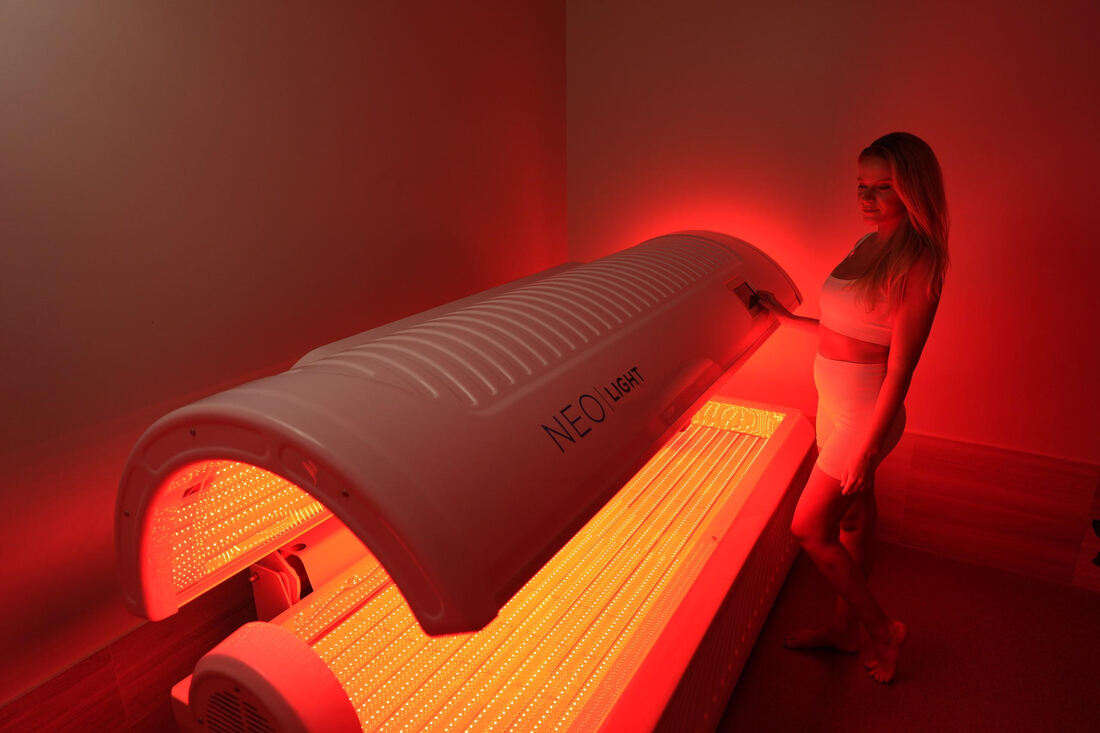Harnessing the Power of Light: Exploring Different Light Therapies for Health and Wellness1/15/2024 In recent years, light therapies have gained popularity as alternative treatments that utilize the power of light to promote healing and improve overall well-being. From photobiomodulation therapy to red light therapy, blue light therapy, UV light therapy, and infrared sauna therapy, these light-based treatments offer a range of benefits for various conditions. In this comprehensive guide, we will delve into the science behind each therapy, highlight their specific health benefits supported by scientific studies, and provide guidance on how to start receiving therapy.
1. Photobiomodulation Therapy: Photobiomodulation therapy, also known as low-level light therapy or cold laser therapy, utilizes specific wavelengths of light to stimulate cellular function and enhance the body's natural healing processes. Scientific studies have shown its effectiveness in reducing pain and improving function in chronic low back pain patients, as well as promoting wound healing in diabetic patients with foot ulcers. To start receiving photobiomodulation therapy, consult with a healthcare professional specializing in this treatment, who will assess your condition and determine the appropriate treatment plan. 2. Red Light Therapy: Red light therapy harnesses red or near-infrared light to stimulate cellular function and promote healing. Scientific studies have demonstrated its ability to improve skin health by reducing wrinkles, increasing collagen production, and rejuvenating the skin. It has also shown promising results in pain relief and wound healing, as well as promoting hair growth in individuals with androgenetic alopecia. To begin red light therapy, consult with a healthcare professional or dermatologist to determine the appropriate treatment plan and device settings. 3. Blue Light Therapy: Blue light therapy targets and eliminates the bacteria responsible for acne, making it an effective treatment for acne and other skin conditions. Scientific studies have confirmed its effectiveness in reducing inflammatory acne lesions and improving acne severity and skin texture when combined with red light therapy. To start blue light therapy, consult with a dermatologist to determine the best treatment plan and device settings for your specific acne condition. 4. UV Light Therapy: UV light therapy utilizes specific wavelengths of ultraviolet light to treat skin conditions such as psoriasis, vitiligo, and eczema. Scientific studies have shown its effectiveness in reducing symptoms and improving quality of life in patients with psoriasis and vitiligo. UV light therapy should always be administered under medical supervision. Consult with a dermatologist or healthcare professional specializing in dermatology to determine the appropriate treatment plan. 5. Infrared Sauna Therapy: Infrared sauna therapy uses infrared light to heat the body directly, promoting detoxification, relaxation, and various health benefits. Scientific studies have demonstrated its effectiveness in reducing pain, fatigue, and improving quality of life in patients with chronic pain conditions. It has also shown positive effects on cardiovascular function and blood pressure reduction. To start infrared sauna therapy, follow the manufacturer's instructions and guidelines for safe and effective use. If you have any underlying health conditions or concerns, consult with a healthcare professional before beginning therapy. Conclusion: Light therapies offer a range of benefits for promoting health and wellness. From the cellular stimulation of photobiomodulation therapy to the skin rejuvenation and pain relief benefits of red light therapy, the acne-fighting properties of blue light therapy, the targeted treatment of skin conditions with UV light therapy, and the detoxification and relaxation benefits of infrared sauna therapy, these therapies provide non-invasive and natural treatment options. When considering any of these therapies, it is crucial to consult with a healthcare professional or specialist who can assess your specific needs and provide personalized recommendations. They will determine the appropriate treatment plan, frequency of sessions, and device settings to ensure optimal results and safety. Remember, always prioritize your health and consult with a healthcare professional before starting any new treatment.
0 Comments
Leave a Reply. |
AuthorDamian Solorzano is Health and Wellness Influencer, Respiratory Specialist and Health Coach who is passionate about optimizing personal health. Categories
All
Archives
March 2024
|

 RSS Feed
RSS Feed